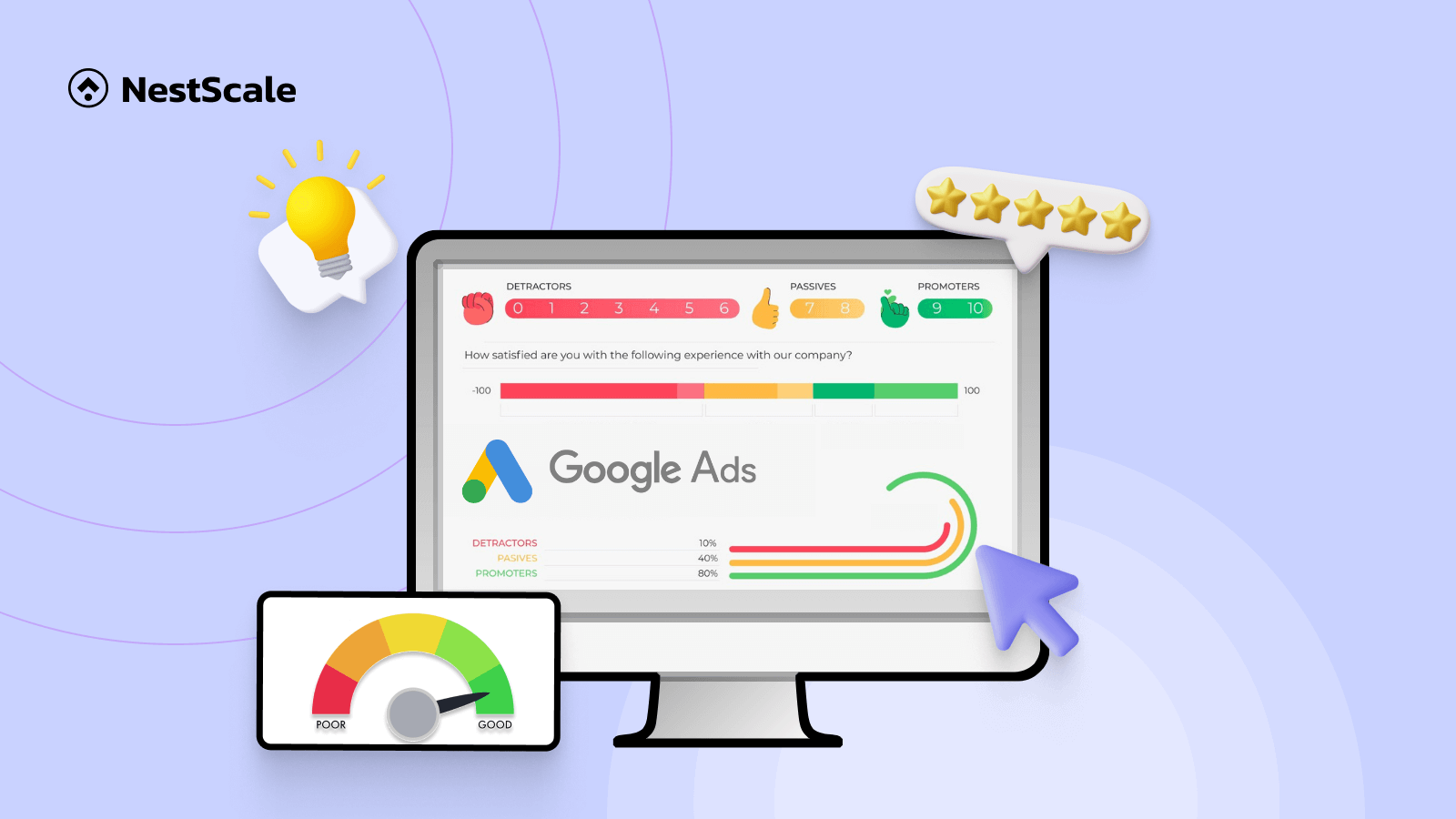Google Ads is crucial for digital marketers, offering numerous metrics that provide valuable insights. Among these, the Google Quality Score stands out as highly significant. This blog will provide you with the details of Google’s Quality Score, offering tips, tricks, and practical guidance to boost your score. Together, let’s discover how to improve your digital advertising tactics by mastering Quality Score optimization for outstanding campaign results!
What is Quality Score in Google Ads?
Google’s Quality Score assesses your ad’s quality by evaluating its relevance in comparison to other advertisers. It considers elements like keywords, landing pages, and Click-Through Rate (CTR). From assessing these elements, Google will scale your score from 0 to 10. A higher quality score translates to lower costs and improved ad placement, indicating a strong correlation between higher scores, reduced expenses, and better ad positioning.
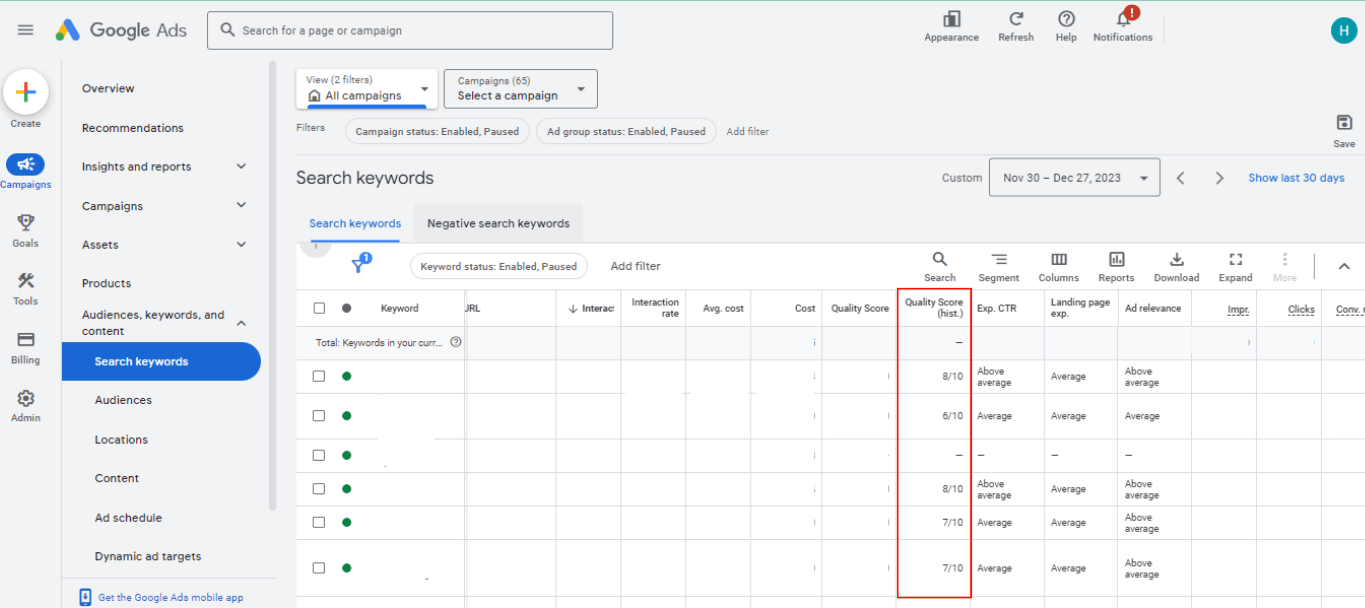
The importance of Google Ads Quality Score
Google ads quality will directly affect the Ads rank of your campaign, especially in some cases:
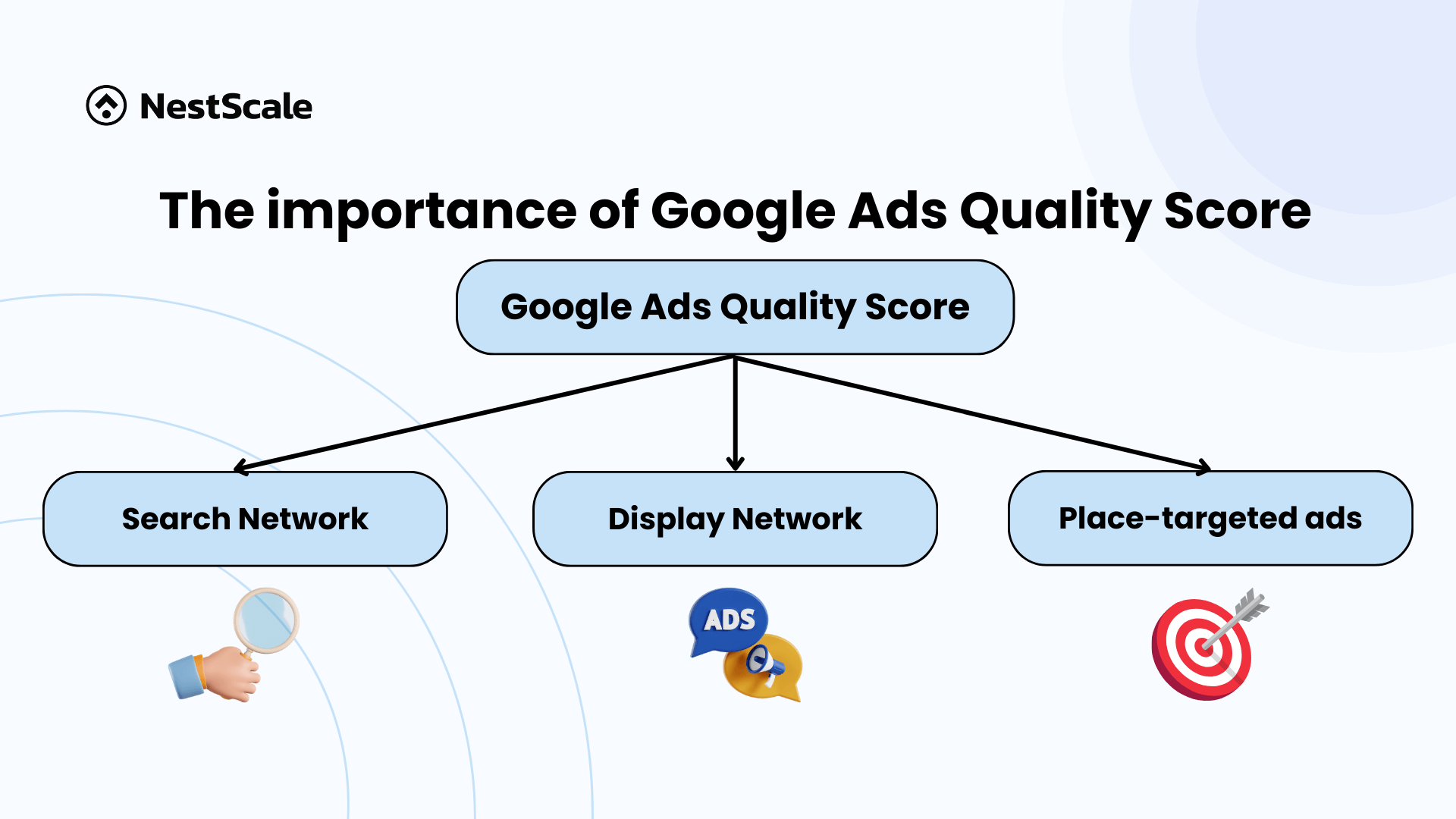
- Affect the Search Network: Google’s Quality Score significantly impacts an ad’s positioning. Advertisers with ample budgets secure their ad positions by ensuring a high-quality score. Conversely, those with constrained budgets need to optimize their accounts for top ad placements, even if their CPC bid is lower than competitors’, provided they possess a superior Quality Score.
- Affect the Display Network: Similarly, the dynamics apply to the Display Network bidding, where Quality Score plays a pivotal role in determining ad placements.
- Affect Place-targeted ads: Google evaluates your bid for placement-targeted ads in the Display Network. This assessment involves either the ad group or individual placements, considering your Ad Group Quality Score as well.
A low Google Quality Score can also significantly impact your Google Ads account’s performance and success. When your Keyword Quality Score is insufficiently low, your keyword may not qualify to participate in an auction, resulting in your ad not being displayed or able to compete for a Google user’s attention. Additionally, a poor Google Quality Score can lead to lower ad positions, translating to reduced website traffic and a diminished Return on Investment (ROI).
How Google Ads quality score is measured
There will be some factors Google uses to evaluate the quality of your ads. Hence, let’s find out what they are and what algorithm Google uses to reveal your score.
What will affect your Google Ads Quality Score?
Google depends on Ad relevance, expected CTR, and landing page experience. Each of them has a different benchmark to score. Below is the specific information
- Ad relevance refers to the alignment between your ad and the search query. When evaluating your ad, Google examines your message, comparing it to the search terms triggering the ad. The closer these elements match, the higher the ad relevance level assigned to your ad.
- Expected Click-Through Rate (CTR) relies on past performance to predict the likelihood of your ads being clicked. During auctions, Google Ads computes a more precise expected CTR based on various factors like search terms, device type, and other auction-related elements.
- Landing page experience involves Google assessing the correlation between the landing page, keywords, and ads. Factors such as page transparency, navigation, original content, and load times are evaluated to enhance user experience when visitors access your landing page.

What are Google Ad quality score levels?
As mentioned earlier, Google Ads evaluates ad quality using three key factors. Therefore, when presenting the results of your Google Ads Quality Score, Google will also present an assessment for each of these factors. For each factor influencing your ad quality score, there are three levels:
- Above average:
- Average
- Below average

If your ad receives ratings of “Average” or “Below average,” it signals an opportunity for improvement. This evaluation is conducted by comparing your ad performance with other advertisers whose ads appeared for the same keyword within the last 90 days.
How to see Google Ads quality score?
Step 1: Click the Campaigns icon, choose Search keywords
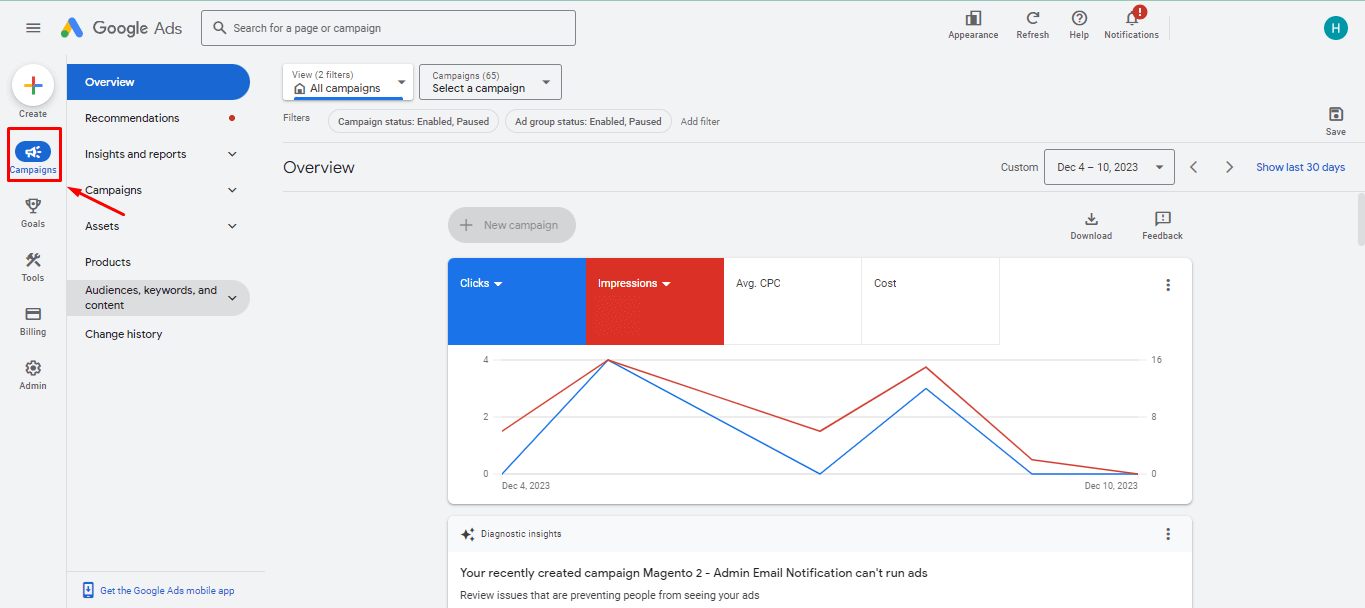
Step 2: In the upper right corner, choose the Column icon

Step 3: Choose Quality score
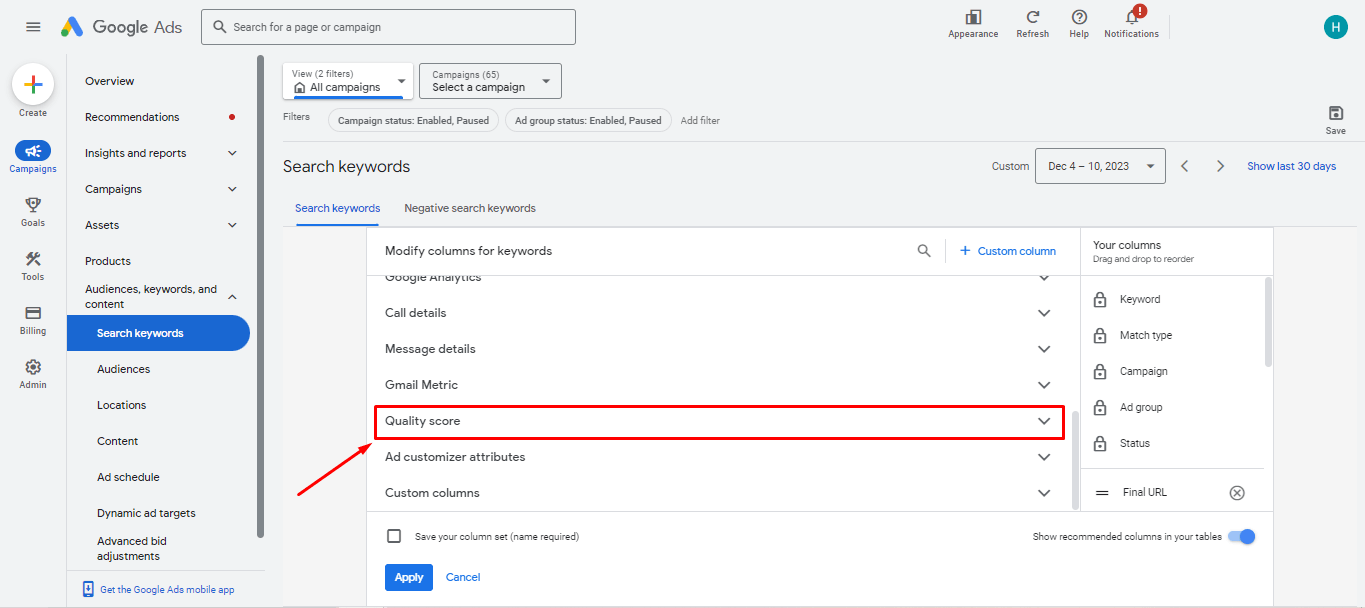
Step 4: Choose one among the options to view the past metrics

Step 5: Choose Apply to see the score

How to improve Google Ads Quality Score
As previously discussed, enhancing three key aspects—ad relevance, expected CTR, and user experience—is crucial to achieving a decent Google Ads quality score. We’re available to assist you in implementing strategies tailored to your campaign, ensuring its growth and success.
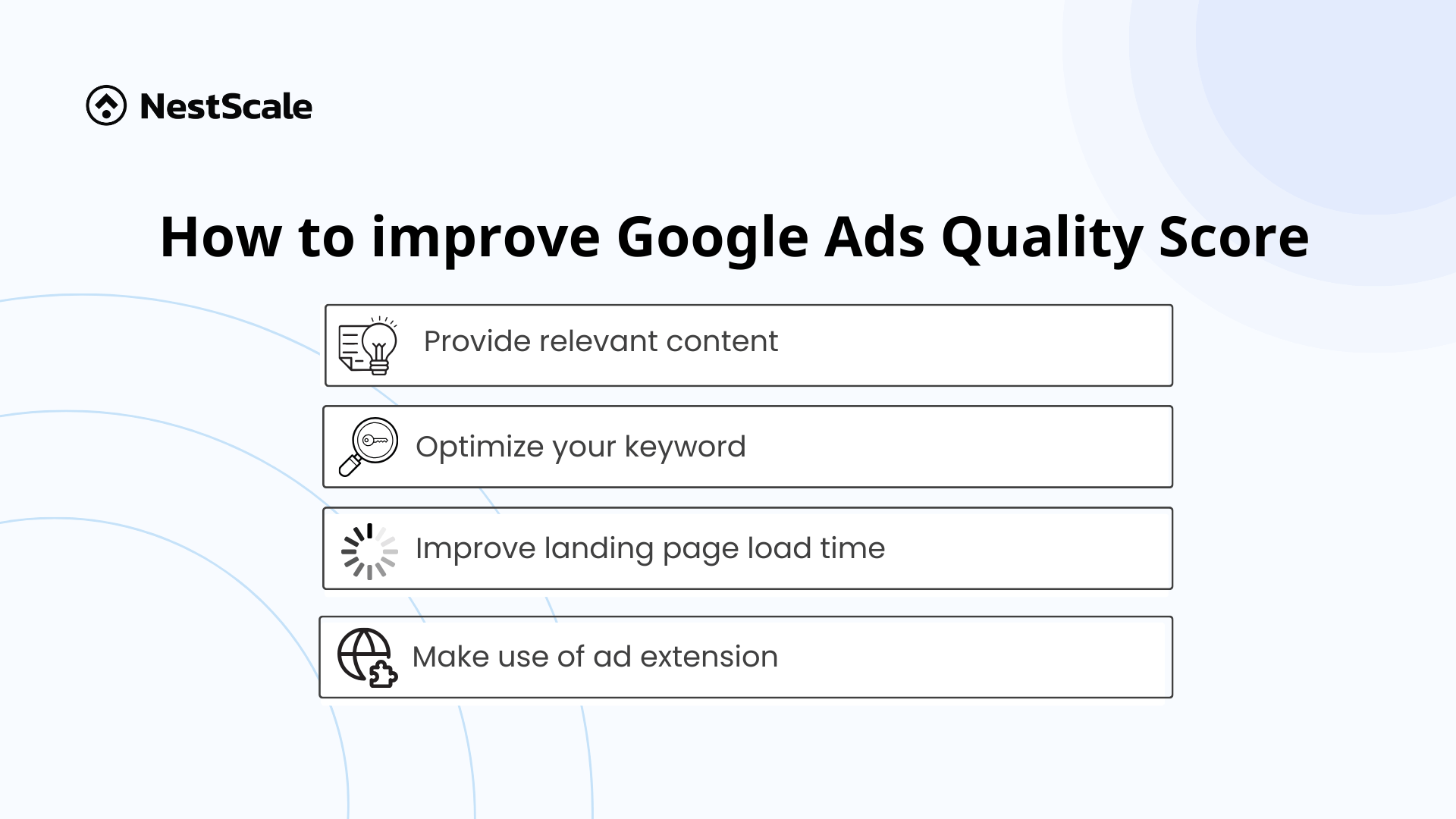
Provide relevant content
When crafting your content, consider several suggestions. Firstly, focus on making it useful, ensuring that it offers genuine value. Avoid excessive technical jargon and opt for clear, understandable language. Additionally, incorporate informative graphics or visuals to aid comprehension. These three key points should be taken into account when shaping your content to guarantee that, despite promoting your ad, it remains helpful to your audience.
Augment your ad copy by ensuring alignment between the headline in your ad and the headline on your landing page. This congruence emphasizes the relevance of your ads. When promoting a 20% sale on a product, ensure that this discount percentage is prominently displayed and consistent on your landing page. It’s crucial to avoid making customers feel deceived, as maintaining transparency is imperative for all advertisers.
Optimize your keyword
Keywords are an essential factor that will decide whether your ads can perform well and get you the results you need. Choose the right key phrase to optimize for your Google Ads will be a great start to boost your ads performance. Hence, in the next part, let’s look at some practices you can use to improve your keyword quality score:
- Mix your short and long keywords: Short keywords have broader visibility (or broad match keywords), reaching a wider customer base, so raise the popularity of your ads. Meanwhile, long-tail keywords (Phrase or Exact keywords), target specific audience segments. Although they may yield lower search volumes compared to their shorter counterparts, they often result in higher conversion rates. Thus, make sure to balance the advantages and disadvantages of both types.
- Make use of negative keywords: Utilize negative keywords to prevent specific terms from triggering your ads in search results. Therefore, employing negative keywords can effectively save your campaign expenses and enhance overall campaign performance by refining targeting and reducing irrelevant ad displays.
Improve your landing page experience for Google Ads
Creating a good landing page featuring a clear logo and bold headlines will be really beneficial for your Quality Score optimization. Hence, let’s look at some of the suggestions below:
- Utilize bullet points for easy skimming and information consumption.
- Minimize distracting links on your landing page, as an excess of these links can prompt customers to swiftly exit your page.
- Limiting distractions to make the information on your landing page clearer to users. Also, easy navigation is also a great motivation that encourages visitors to stay on your page longer.
These 3 aspects are the basic things you need to ensure to increase your landing page experience with customers and promptly convert sales.
Improve landing page load time
Landing page load time can heavily affect your campaign. According to research, if the loading time is more than 3 seconds, a number of 53% of traffic will be down. For this reason, we need to improve the page load speed in these ways:
- When targeting multiple countries or employing specialized SEO landing pages, incorporating a Content Delivery Network (CDN) alongside a local host is advisable. A CDN stores cached versions of your website’s content, including images and HTML, in diverse geographical locations. This setup enables users to access data from servers nearest to their location, thereby enhancing page loading speed and overall user experience.
- Reduce excessive images on your landing page to boost its performance and loading speed. Avoid large image files exceeding 500kb or a megabyte to ensure faster loading. Skip using a 1280×800 image as a thumbnail; optimize by resizing with an app like Photoshop, and compressing it afterward for smaller file sizes.
- Redirects automatically guide visitors from one file or place to another, using different instructions or techniques. Minimizing unnecessary redirects, especially when transitioning to a new domain, contributes to enhancing your website’s loading speed.
Make use of ad extension
Google offers multiple ad extensions for campaigns, boosting expected CTR when utilized effectively. Types include:
- Sitelink: This extension enables additional links beneath your ad, directing users to other relevant sections of your website. This improves CTR by offering users more options and making your ad visibly larger.
- Call: Incorporating a call extension facilitates easy contact for potential customers. Clicking on the call extension directly initiates a call on mobile or directs users to call software on desktops. This approach suits businesses reliant on customer calls for sales completion and lead generation.
- Promotion: The Promotion extension enables the inclusion of special offers or sales below your ad. It offers four types: monetary discount, up-to-monetary discount, a percentage discount, and up-to-percentage discount. Emphasizing time-bound offers or discounts that outprice competitors encourages a higher CTR. This strategy entices prospects to click on your ad over your competitors.
Level up your Google Ads quality score with NestAds
Having gathered all the essential details to refine your Google Ads for optimal performance, it’s time to implement these insights and craft top-performing ads for better conversions. Additionally, it’s crucial to consistently monitor the metrics derived from your ads. This data will empower you to make well-informed marketing decisions and adapt your strategy accordingly.
NestAds stands out as the perfect partner for consistently monitoring, overseeing and improving your ad effectiveness. This platform provides the means to understand where your ad traffic originates and the actions users perform on your landing page, offering valuable insights. If any aspect isn’t meeting expectations, immediate adjustments can be made to elevate your ads’ performance. It’s a straightforward, convenient, and cost-effective solution. Seize the opportunity to experience this optimizing tool!




































